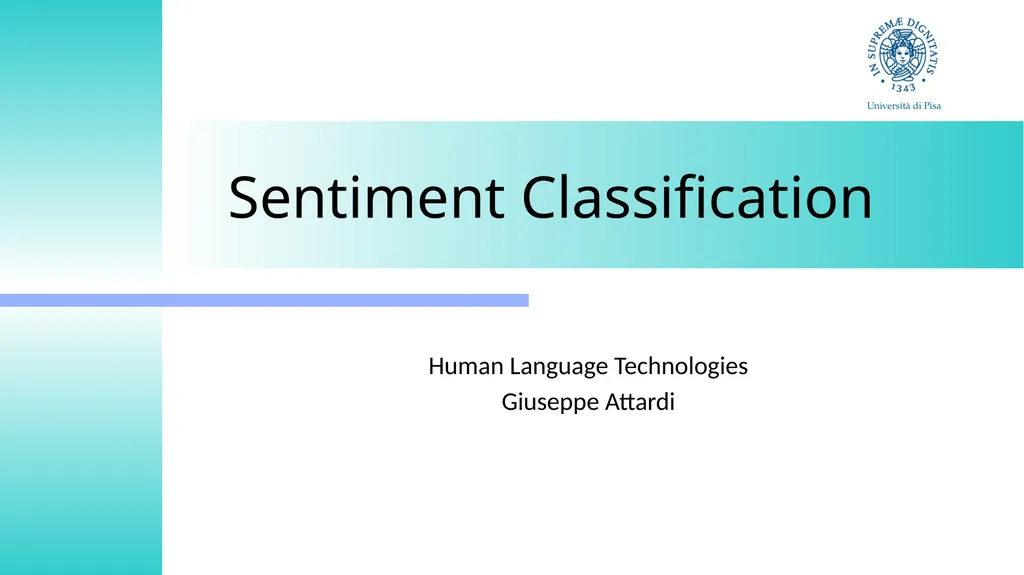Sentiment Classification Human Language
Author : myesha-ticknor | Published Date : 2025-05-16
Description: Sentiment Classification Human Language Technologies Giuseppe Attardi Unsupervised Sentiment Classification Unsupervised methods do not require labeled examples Knowledge about the task is usually added by using lexical resources and
Presentation Embed Code
Download Presentation
Download
Presentation The PPT/PDF document
"Sentiment Classification Human Language" is the property of its rightful owner.
Permission is granted to download and print the materials on this website for personal, non-commercial use only,
and to display it on your personal computer provided you do not modify the materials and that you retain all
copyright notices contained in the materials. By downloading content from our website, you accept the terms of
this agreement.
Transcript:Sentiment Classification Human Language:
Sentiment Classification Human Language Technologies Giuseppe Attardi Unsupervised Sentiment Classification Unsupervised methods do not require labeled examples. Knowledge about the task is usually added by using lexical resources and hard-coded heuristics, e.g.: Lexicons + patterns: VADER Patterns + Simple language model: SO-PMI Neural language models have been found that they learn to recognize sentiment with no explicit knowledge about the task. Supervised/unsupervised Supervised learning methods are the most commonly used one, yet also some unsupervised methods have been successfully. Unsupervised methods rely on the shared and recurrent characteristics of the sentiment dimension across topics to perform classification by means of hand-made heuristics and simple language models. Supervised methods rely on a training set of labeled examples that describe the correct classification label to be assigned to a number of documents. A learning algorithm then exploits the examples to model a general classification function. VADER VADER (Valence Aware Dictionary for sEntiment Reasoning) uses a curated lexicon derived from well known sentiment lexicons that assigns a positivity/negativity score to 7k+ words/emoticons. It also uses a number of hand-written pattern matching rules (e.g., negation, intensifiers) to modify the contribution of the original word scores to the overall sentiment of text. Hutto and Gilbert. VADER: A Parsimonious Rule-based Model for Sentiment Analysis of Social Media Text. ICWSM 2014. VADER is integrated into NLTK The classification pipeline The elements of a classification pipeline are: Tokenization Feature extraction Feature selection Weighting Learning Steps from 1 to 4 define the feature space and how text is converted into vectors. Step 5 creates the classification model. Scikit-learn The scikit-learn library defines a rich number of data processing and machine learning algorithms. Most modules in scikit implement a 'fit-transform' interface: fit method learns the parameter of the module from input data transform method apply the method implemented by the module to the data fit_transform does both actions in sequence and is useful to connect modules in a pipeline. Sentiment Analysis on Tweets Evolution SemEval Shared Task Competition 2013, Task 2 2014, Task 9 2015, Task 10 2016 2017 Evolution of technology: Top system in 2013: SVM with sentiment lexicons and many lexical features Top system in 2016: CNN with word embeddings In 2017: most systems used CNN or variants SemEval 2013, Task 2 Best Submission: TNRC-Canada: Building the State-of-the-Art in Sentiment Analysis of Tweets, Saif M. Mohammad, Svetlana Kiritchenko, and Xiaodan Zhu, In Proceedings of the seventh international workshop














